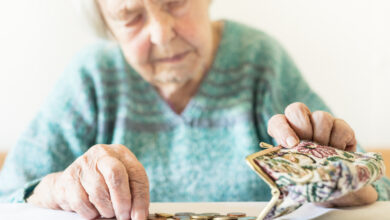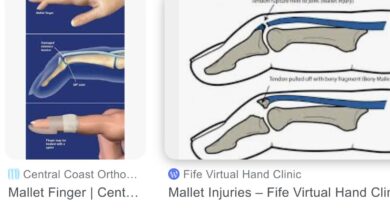LEG CRAMPS: A Real Pain!

How often do you awaken with leg cramps? Cramps that hurt like crazy and affect your calves, feet, or hamstrings. If you’re like me, it happens 2-3 times a week. For no apparent reason, you suddenly wake up with pain that tightens up the affected muscle, and until you get up and stretch it out, it’s unrelenting. Sometimes even after you stretch it out it comes back again. Cramps, commonly called Charley horses, are sudden involuntary contractions of the leg or feet muscles. They can occur in any muscle, but lower extremity muscles, especially calves and feet, are most often affected. An amazing 95% of the population has cramps so causes and remedies are numerous.
The term Charley horse originated in the late 19th century. A baseball pitcher named Charley Radbourn was troubled by frequent muscle cramps during game play. His nickname was “Old Hoss” so it is alleged that it was he for whom the term Charley horse was originated. They must have been bad and happened often for someone to come up with that term. Later in life he was inducted into the Baseball Hall of Fame so he must have been a decent player.
Muscle cramps are of six basic types. They are as follows:
- True cramps
- Rest cramps
- Dystonic cramps
- Tetany
- Metabolic cramps
- Neurogenic cramps
True cramps are due to hyperexcitability of the nerves that stimulate muscles and usually occur from overuse or physical stress. They the most common type.
Rest cramps usually occur at night and are of unknown cause. They are initiated by making a movement that shortens the muscle and triggering a contraction. Dehydration and magnesium depletion are thought to be responsible factors.
Dystonic cramps occur when muscles not intended for movement are stimulated to contract. The eyelids, jaws, neck, and larynx are muscles involved. Writer’s cramp of the hands and forearms and facial tics are other examples.
Tetany is a rare cause of cramps resulting from exposure to tetanus toxin from whatever source.
Metabolic cramps occur as a result of secondary stimuli such as low calcium, low magnesium, low potassium, and a whole host of drugs (diuretics, drugs for dementia, myasthenia gravis, osteoporosis, anxiety, and asthma, and statins for cholesterol).
Neurogenic cramps result from neurological conditions such as ALS (Lou Gehrig’s disease), spinal stenosis, and diabetic peripheral neuropathy.
So many things cause muscle cramps that the list is almost endless. Below is a list of known causes in decreasing order of frequency.
- Overuse of muscles leading to fatigue
- Muscle straining-intense exercise
- Bad sitting or kneeling position
- Dehydration
- Circulatory problems-arterial blockage
- Diabetes and diabetic peripheral neuropathy
- Organic disease-neurologic, metabolic disease, multiple sclerosis
- Spinal stenosis
- Mineral deficiency (Ca, Mg, K), poor nutrition, drugs
- Pregnancy
- Osteoarthritis
- Hypothyroidism
- Generalized fatigue
Prevention of Cramps: Obviously if you can do something to prevent them, cramps won’t be a bother, and you’ll sleep better. Adequate hydration, stretching before and after exercise, electrolyte (Ca, Mg, K) replacement, and stretching before bedtime are effective preventive techniques. Hot baths, whirlpool treatments, muscle massage, and adequate intake of calcium, magnesium, vitamin E, and vitamin D help, too. Seventy-eight percent of cramp sufferers have been shown to have a low magnesium, so diets heavy in greens, grains, meat, fish, bananas, apricots, nuts, and soybeans are recommended, too.
Treatment of Cramps overlaps with prevention so the measures listed previously are considered treatments as well. If an underlying cause for cramps can be identified, treating or eliminating that condition is most effective. But muscle relaxants such as cyclobenzaprine (Flexeril), Baclofen, and as a last resort, botulinum toxin (Botox), are effective, too. Quinine, which reduces muscle excitability, was prescribed at bedtime for many years, but it became difficult to get because despite its incredible efficacy, it’s side effects were considered too serious to recommend widespread use. Quinine causes “cinchonism” which is a syndrome of nausea, vomiting, headaches, ringing in the ears, and deafness. Diarrhea, vision problems, and heart rhythm irregularities were encountered, too, so the FDA put the quash on prescribing quinine. But tonic water contains quantities of quinine so many patients use it preventively.
Dr. G’s Opinion: Leg cramps are a very common problem. Not a week went by in my office when a patient didn’t complain of them. Early on I prescribed quinine, which worked very well, but when it became impossible to get, I had to use something else, so I tried muscle relaxants, calcium and vitamin D, stretching and heat application. In my experience, nothing works as well as quinine, and I felt the side effects were overstated. But when you can’t get it, you can’t get it. So if you have leg cramps, and read this, you still have many therapeutic options available. Best of luck with this very perplexing problem.
References: MedicineNet.com/Leg Cramps
prevention.com/leg cramps
PatientInfo.com/leg cramps




